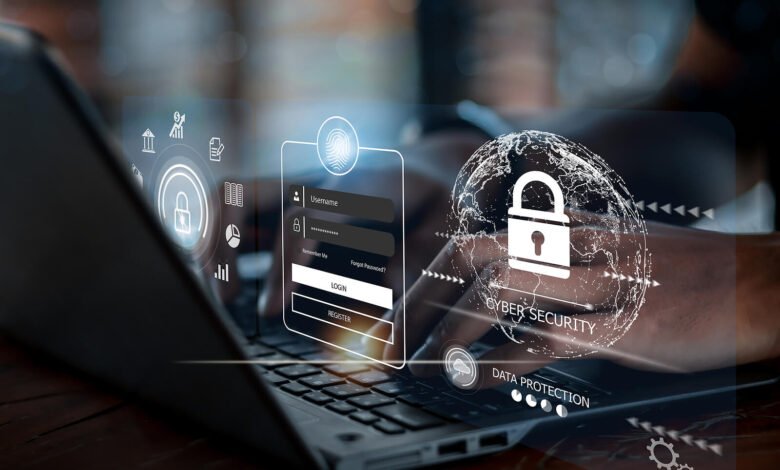Cybersecurity Challenges in 2025: How to Stay Protected

As we progress into 2025, the digital landscape is becoming more interconnected, sophisticated, and vulnerable. The rapid adoption of emerging technologies like 5G, artificial intelligence, and quantum computing has opened up new frontiers for innovation but also expanded the attack surface for cybercriminals. Staying protected in this evolving environment requires awareness of the latest cybersecurity challenges and proactive strategies to mitigate risks.
The Evolving Cybersecurity Landscape in 2025
With digital transformation accelerating across industries, cyber threats are becoming more complex and frequent. Cybercriminals are leveraging advanced tools and techniques to exploit vulnerabilities in systems, networks, and individuals. Understanding these trends is crucial for developing effective defense mechanisms.
See also: 5G Technology: Revolutionizing Connectivity and Its Impacts
Key Cybersecurity Challenges in 2025
1. Ransomware Evolution
Ransomware attacks remain one of the most significant threats, with attackers deploying more sophisticated encryption methods and targeting critical sectors like healthcare, finance, and government. Double extortion, where attackers threaten to release stolen data unless paid, is becoming increasingly common.
2. AI-Powered Cyber Attacks
Cybercriminals are now using artificial intelligence to automate attacks, enhance phishing schemes, and bypass traditional security measures. AI-powered malware and deepfake technologies are creating more realistic and convincing scams.
3. Quantum Computing Risks
While quantum computing promises revolutionary breakthroughs, it also poses a severe threat to traditional encryption methods. Cybercriminals could potentially decrypt sensitive data, rendering current security protocols obsolete.
4. IoT Vulnerabilities
The proliferation of Internet of Things (IoT) devices in homes, businesses, and industries has created numerous entry points for attackers. Many IoT devices lack robust security measures, making them prime targets for exploitation.
5. Supply Chain Attacks
Supply chain vulnerabilities are a growing concern, as attackers exploit third-party vendors to infiltrate larger organizations. These attacks can cause widespread disruption and compromise sensitive data.
6. Social Engineering and Phishing
Sophisticated phishing attacks continue to prey on human vulnerabilities. Cybercriminals use personalized tactics to manipulate individuals into divulging sensitive information or clicking on malicious links.
7. Cloud Security Gaps
As businesses increasingly rely on cloud services, misconfigurations and insecure APIs are leading to data breaches. Unauthorized access and weak authentication methods exacerbate the risks.
8. Insider Threats
Disgruntled employees or careless insiders can unintentionally or intentionally compromise organizational security. Insider threats are particularly challenging to detect and mitigate.
9. Remote Work Challenges
The shift to hybrid and remote work environments has expanded attack surfaces. Personal devices, unsecured networks, and lack of employee training contribute to vulnerabilities.
10. Data Privacy Regulations
As governments enforce stricter data privacy laws, organizations face challenges in complying with regulations while ensuring robust security practices. Non-compliance can lead to severe penalties.
How to Stay Protected in 2025
1. Strengthen Endpoint Security
Invest in robust endpoint protection tools to secure devices connected to networks, including personal devices used for remote work. Employ antivirus software, firewalls, and intrusion detection systems.
2. Embrace Zero Trust Architecture
Adopt a Zero Trust security model that assumes no entity is trustworthy by default. Continuously verify the identity and access of users, devices, and applications within your network.
3. Leverage AI for Defense
Use artificial intelligence and machine learning to detect anomalies, identify threats, and automate responses. AI-powered tools can help organizations stay ahead of sophisticated attacks.
4. Enhance Cloud Security
Implement robust access controls, encryption, and multi-factor authentication (MFA) for cloud services. Regularly audit cloud configurations to identify and fix vulnerabilities.
5. Educate and Train Employees
Conduct regular cybersecurity awareness programs to train employees on recognizing phishing attempts, using strong passwords, and following secure practices.
6. Monitor IoT Devices
Ensure all IoT devices are updated with the latest firmware and configured securely. Segregate IoT networks from critical systems to minimize risk.
7. Prepare for Quantum Computing
Begin transitioning to quantum-resistant encryption algorithms to protect sensitive data from potential future threats posed by quantum computing.
8. Collaborate with Third-Party Vendors
Establish stringent security protocols with third-party vendors and conduct regular audits to mitigate supply chain risks.
9. Implement Incident Response Plans
Develop and regularly test incident response plans to minimize downtime and recover quickly from potential breaches.
10. Stay Updated on Regulations
Keep abreast of evolving data privacy regulations and ensure compliance by integrating privacy-by-design principles into business processes.
Looking Ahead
The cybersecurity challenges of 2025 demand a proactive, multi-layered approach to defense. As cybercriminals evolve their tactics, organizations and individuals must stay vigilant, adopt advanced security measures, and foster a culture of cybersecurity awareness. By investing in technology, training, and collaboration, we can navigate the digital future safely and securely.




